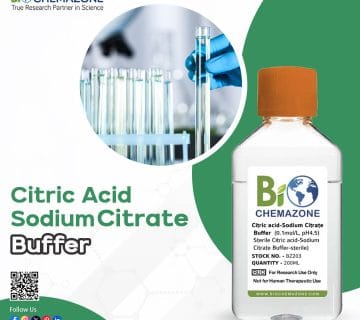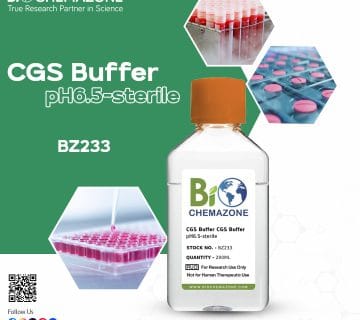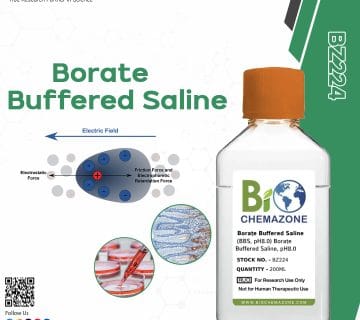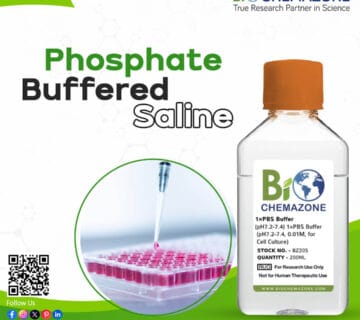The Ultimate Guide to 0.1mol/L MES Buffer: Uses, Properties, and Safety Guidelines
Biological research often requires precise control over pH levels to maintain the stability of biochemical reactions. The 0.1mol/L MES Buffer is an essential tool for scientists in various fields, including biochemistry, molecular biology, and cell culture. This blog post will provide a comprehensive guide to the 0.1mol/L MES Buffer, including its chemical properties, uses, preparation methods, safety considerations, and storage guidelines.
What is 0.1mol/L MES Buffer?
The 0.1mol/L MES Buffer is a biological buffer solution made from 2-(N-morpholine)ethanesulfonic acid (abbreviated as MES), a zwitterionic organic compound widely used in research applications. This buffer maintains a stable pH environment, critical for various experiments.
- Chemical Formula: C₆H₁₃NO₄S
- Molecular Weight: 195.24 g/mol
- CAS Number: 4432-31-9
Key Properties of MES
MES is a Good’s buffer, recognized for its minimal interference with biological systems. Below are its essential properties:
- pKa: 6.15 at 25°C
- Effective Buffer Range: pH 5.5 to 6.7
- Commonly Used pH Values: 5.5, 6.0, 6.5
- Composition: Includes MES, deionized water, and preservatives
- Appearance: Clear liquid when dissolved, indicating proper preparation.
Applications of 0.1mol/L MES Buffer
1. Biochemical Research
MES buffers are ideal for enzyme kinetics studies and protein purification, where maintaining specific pH levels is crucial.
2. Cell Culture
The buffer supports cell growth by maintaining pH stability, preventing fluctuations that could affect cell metabolism.
3. Electrophoresis
MES is used as a buffer in SDS-PAGE and other electrophoresis methods due to its compatibility with separating proteins.
4. Diagnostic Assays
Many diagnostic assays rely on MES buffer for stable reaction conditions, ensuring accuracy and reproducibility.
5. Pharmaceutical Research
In drug formulation studies, MES buffers help assess drug stability under varying pH conditions.
How to Prepare 0.1mol/L MES Buffer
Preparation of the 0.1mol/L MES Buffer requires precision to ensure the buffer’s effectiveness. Follow these steps carefully:
Materials Needed
- MES (C₆H₁₃NO₄S)
- Deionized water
- pH meter
- Preservatives (optional, based on experiment requirements)
- Lab-grade glassware
Step-by-Step Procedure
-
Weigh the MES Powder
Measure the required amount of MES using a precision balance. For a 0.1mol/L concentration, calculate the amount based on the solution’s desired volume. -
Dissolve in Deionized Water
Gradually add the MES powder to approximately 80% of the final volume of deionized water. Stir until completely dissolved. -
Adjust the pH
Use a calibrated pH meter to measure the solution’s pH. Adjust as needed with NaOH or HCl to achieve the target pH (commonly 5.5, 6.0, or 6.5). -
Add Preservatives (Optional)
For extended storage, add preservatives to inhibit microbial growth. -
Dilute to Final Volume
Add deionized water to reach the final desired volume (e.g., 1 liter). -
Filter Sterilization (If Needed)
Pass the solution through a 0.22 µm filter to remove particulates and ensure sterility. -
Store Properly
Store the prepared buffer at 4°C. The buffer is typically valid for up to six months.
Safety Guidelines for Handling MES Buffer
While MES buffers are indispensable in research, proper handling and safety measures are crucial:
1. Wear Protective Gear
Always wear a lab coat, disposable gloves, and safety goggles to minimize exposure.
2. Work in a Well-Ventilated Area
MES solutions can be irritating; conduct experiments in a fume hood or well-ventilated lab.
3. Avoid Inhalation or Ingestion
Take care to prevent accidental inhalation or ingestion of the buffer.
4. Proper Waste Disposal
Dispose of unused buffer or contaminated materials according to institutional and regulatory guidelines.
Storage and Stability of 0.1mol/L MES Buffer
Proper storage is essential to maintain the buffer’s effectiveness:
- Storage Conditions: Store at 4°C in an airtight container.
- Shelf Life: The buffer remains stable for six months if stored under appropriate conditions.
- Visual Inspection: Check for discoloration or precipitation before use; discard if observed.
Advantages of Using 0.1mol/L MES Buffer
1. pH Stability
The narrow buffer range ensures precise control of pH, crucial for sensitive experiments.
2. Compatibility
MES buffers are compatible with a wide range of biological molecules and do not interfere with reactions.
3. Ease of Preparation
Simple preparation steps and availability make MES a preferred choice in labs.
4. Minimal UV Absorption
MES exhibits low UV absorbance, making it suitable for spectrophotometric studies.
Common Challenges and Solutions
1. Precipitation Issues
- Problem: Precipitates forming during storage.
- Solution: Filter the solution post-preparation and ensure proper storage.
2. Incorrect pH
- Problem: Difficulty in achieving the desired pH.
- Solution: Use a high-quality pH meter and freshly prepared NaOH or HCl for adjustments.
3. Contamination
- Problem: Microbial growth in stored solutions.
- Solution: Add preservatives and use sterilized containers.
Frequently Asked Questions (FAQs)
1. What is the primary use of 0.1mol/L MES Buffer?
The buffer is primarily used to maintain stable pH levels in biological and biochemical experiments.
2. Can MES Buffer be autoclaved?
Autoclaving is not recommended as high temperatures may degrade the buffer. Filter sterilization is a better option.
3. Is MES Buffer toxic?
While MES is generally safe, it can be irritating to the skin and eyes. Handle it with appropriate protective equipment.
4. How long can MES Buffer be stored?
When stored at 4°C, MES Buffer remains stable for up to six months.
5. Can I adjust the pH after storage?
Yes, pH adjustments can be made, but it’s best to prepare a fresh solution for critical experiments.
6. What is the difference between MES and other Good’s buffers?
MES has a unique pKa and buffer range, making it suitable for experiments requiring pH levels between 5.5 and 6.7.
Conclusion
The 0.1mol/L MES Buffer is an invaluable tool for researchers, providing consistent pH control across various applications. Its stability, compatibility, and ease of preparation make it a staple in laboratories worldwide. By following proper preparation, handling, and storage protocols, you can ensure optimal performance for your experiments.







